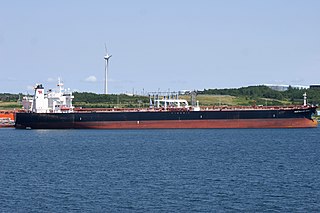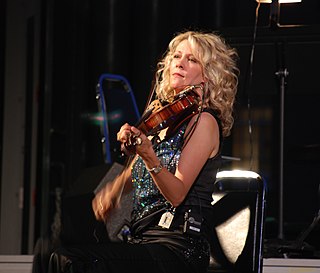Related Research Articles

Cape Breton University (CBU) is a public university located in Sydney, Nova Scotia, Canada. It is the only post-secondary degree-granting institution within the Cape Breton Regional Municipality and on Cape Breton Island. The university is enabled by the Cape Breton University Act passed by the Nova Scotia House of Assembly. Prior to this, CBU was enabled by the University College of Cape Breton Act (amended). The University College of Cape Breton's Coat of Arms were registered with the Canadian Heraldic Authority on May 27, 1995.

Port Hawkesbury is a municipality in southern Cape Breton Island, Nova Scotia, Canada. While within the historical county of Inverness, it is not part of the Municipality of Inverness County.
The music of Canada's Maritime provinces has included many artists from both the traditional and pop genres, and is mostly European in origin. The traditional genre is dominated by the music brought to the region by the European settlers, the most well known of which are the Scots & Irish celtic and Acadian traditions. Successful pop acts from all genres have had degrees of national and international success since the beginning of recorded music period. Performers as diverse as Hank Snow, Stan Rogers, Anne Murray, the Rankin Family, Barachois, The Men of the Deeps and April Wine have all experienced tremendous success as popular music acts with considerable national and international tours and record sales.
Hugh Alan "Buddy" MacMaster was a Canadian fiddler. He performed and recorded both locally and internationally, and was regarded as an expert on the tradition and lore of Cape Breton fiddle music.

The Gaelic College, formally The Royal Cape Breton Gaelic College, is a non-profit educational institution located in the community of St. Ann's, on Nova Scotia's Cape Breton Island, along the Cabot Trail. Founded in 1938, its focus has been on the perpetuation of Highland Scottish Gaelic culture.
The province of Nova Scotia is best known for its folk and traditional based music, although other genres have had both an historical presence and recent growth.

Natalie MacMaster is a Canadian fiddler from Troy, Inverness County, Nova Scotia, who plays Cape Breton fiddle music. She has toured with the Chieftains, Faith Hill, Carlos Santana and Alison Krauss, and has recorded with Yo-Yo Ma. She has appeared at the Celtic Colours festival in Cape Breton, Celtic Connections in Scotland and MerleFest in the United States.

Cape Breton fiddling is a regional violin style which falls within the Celtic music idiom. Cape Breton Island's fiddle music was brought to North America by Scottish immigrants during the Highland Clearances. These Scottish immigrants were primarily from Gaelic-speaking regions in the Scottish Highlands and the Outer Hebrides. Although fiddling has changed considerably since this time in Scotland, it is widely held that the tradition of Scottish fiddle music has been better preserved in Cape Breton.
Mabou is an unincorporated settlement in the Municipality of the County of Inverness on the west coast of Cape Breton Island, Nova Scotia, Canada. The population in 2011 was 1,207 residents. It is the site of The Red Shoe pub, Beinn Mhàbu, the An Drochaid Museum, and Glenora Distillers

Rodney Joseph MacDonald is a Canadian politician, educator and musician who served as the 26th premier of Nova Scotia from 2006 to 2009 and as MLA for the riding of Inverness in the Nova Scotia House of Assembly from 1999 to 2009.
Glenn Graham is a Canadian musician, composer, author, and academic from Judique, Cape Breton Island, Nova Scotia.

“On Fire” is the second CD released by Cape Breton's Celtic quartet, The Cottars. It was recorded at Lakewind Sound Studios in Cape Breton, Nova Scotia, and distributed by Warner Music. It was also released in Japan in 2004 by JVC Victor and followed by an extensive Japan tour. All the traditional songs and tunes were adapted and arranged by Allister MacGillivray and The Cottars and are published by Cabot Trail Music, SOCAN.

Robert Beaton was an Atlantic Canadian hockey player, boxer and boxing referee.
Donald Angus Beaton (1912–1981) was a Canadian blacksmith and a Cape Breton-style fiddler.
Boisdale is a community in the Canadian province of Nova Scotia, located in the Cape Breton Regional Municipality on Cape Breton Island. It was named for Lochboisdale, the main village of the island of South Uist in the Outer Hebrides of Scotland. Neil Campbell was granted land in the area in 1836. In 1821, Thomas Lockman, an Irishman who came to Cape Breton in 1799 and lived at Lloyds Cove, petitioned for land, and got a grant next to Neil Campbell's lot in 1842. Angus McIntyre got a grant in 1846, and in 1869, land at what was then called Boisdale was granted to Dugald O'Henley. Farming and lumbering were the basic industries. In 1840, a small log church was constructed by Father John Grant on where the present-day church resides. It was replaced by a new building in 1862, which burned down in September 1928. In 1846, Boisdale Parish was officially erected. A post office was established at Boisdale Chapel in 1854. On October 1, 1873 a new post office was established with Michael McIntyre as office keeper. In 1874, the total population of Boisdale, was that of 500. During this time, the area had 1 store, 3 sawmills, 1 grist mill, and a post office, of which mail was delivered bi-weekly. By 1908, it contained 1 hotel, 2 general stores, 1 saw mill, and 2 gristmills. The population at that time, was 300. In 1915, a newer 40,000 gallon open-wood tank was built replacing an older 40,000 gallon wood tank, for the water services within the area. Father Alexander F. MacGillivray, whom was the fifth pastor of Boisdale, had installed the bell within St. Andrew's Church in Boisdale, in 1882, and had built the Glebe house there in 1890. A new and larger bell, cast by the Meneely Bell Company of New York, was installed in St. Andrew's Church, by Father MacGillivray, on Nov. 14, 1897. In 1921, Father Gillis built St. Andrew's Parish Hall, James Johnston of Red Islands, Nova Scotia was the contractor. The formal opening of the hall was held on September 13, 1921. The original St. Andrew's Parish Church was destroyed by fire on Sunday, September 11, 1927. Construction of a new stone church commenced in June 1929, with help from workers from Quebec. The design style of the church was inspired by the Norman architecture as well as the St Mary the Virgin, Iffley church in England. Link, Weber, and Bowers, architects hailing from Pittsburgh, Pennsylvania, designed the architecture of the church. The approximate cost of the church was $55,000, but the exterior walls had to be repointed during the summer of 1930, which added an extra $7,500 to the total cost. The new church was blessed on Sunday, August 31, 1930, by Bishop James Morrison, assisted by the late Bishop Alexander MacDonald. In 1931, the total population of Boisdale was 449. There was also a train station located on Station Road, in Boisdale during this time. The former Glebe House for St. Andrew's Church was burnt down in 2011, due to a fire. Dugald Smith was the teacher in 1839, and a school-house had been constructed by that time. A new school-house was completed in 1917. Education within the area dates back to the early 1800s, with the Boisdale Consolidated School closing in 2003. The enrolment for the school, in the 1957–1958 academic year, were 82 students, and 3 teachers. By the 1987 Academic year, there were only 21 students, all within grades primary-second, and fourth. In 1943, within what is now known as Ironville, then known as Boisdale Barrachois until 1907, a youth summer camp was built. The two-week summer camp operated from 1943, until its closure in the 1980s. Efforts were made in 1997 to re-open the camp in the spring of 1998. The camp officially closed in 2010, due to the deterioration of some of the buildings. The property in which the youth camp was on, was sold in 2013. In August 1977, the community of Boisdale, as well as Father Webb, unveiled and held a ceremony for the opening of an indoor stone, ice-skating rink. Father Webb also built a Co-op store, in the 70s. A new hall above the store replaced the old Holyrood Hall, which burned down on December 18, 1975. By 1956, the population of Boisdale was 133. Over the years the population decreased, down to 138 by 1991, and estimated to be 105 by the 2001 Census.To the Hill of Boisdale,a book on the genealogical history of Boisdale was published in 1986, and later in a revised edition in 2001, by Father Allan MacMillan, then Priest of the Diocese of Antigonish. Highland Gold Maple, a family-owned and operated sugar maple producer, has been operating within the area for over fifteen years. In late April 2018, their operation burned to the ground due to a fire. By March 2019, Highland Gold Maple had rebuilt the Sugar Shack and are back in operation.
Hugh Alexander “Sandy” MacIntyre (1935–2021) was one of the most respected artists in the tradition of Cape Breton fiddle music.
William Hugh Lamey (1914–1991) was a renowned and influential Cape Breton fiddler. He was a pioneer in recorded performances of the music. As an avid collector of rare tunes, he amassed one of the most comprehensive and valuable collections of written Scottish violin music.
Lee Cremo was a Mi'kmaq fiddler from Cape Breton Island, Canada.

Wentworth Park is a Canadian urban park located in the community of Sydney, part of Nova Scotia's Cape Breton Regional Municipality. The park was created in 1786, just a year after Sydney's founding, making it the oldest of Sydney's parks. Wentworth Park incorporates the Kiwanis Bandshell, a playground, fountains, and a splash pad, as well as a 1.2 kilometres (0.75 mi) network of paved paths surrounding the park's ponds and flower beds.
Pinecone & Pony is a children's animated streaming television series produced by DreamWorks Animation and First Generation Films for Apple TV+. The series is loosely based on the children's book The Princess and the Pony by Kate Beaton. The first season was released on April 8, 2022, and the second season was released on February 3, 2023.
References
- 1 2 MacGillivary, Allister (1981). The Cape Breton Fiddler . College of Cape Breton Press. pp. 82. ISBN 0-920336-12-4.
- ↑ Cranford Publishing